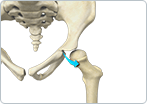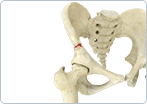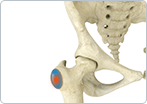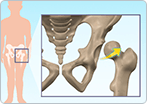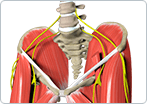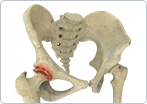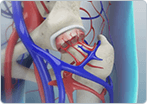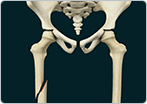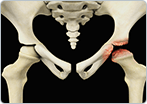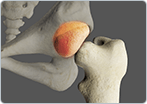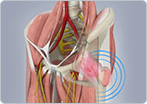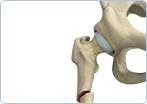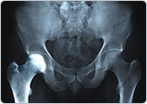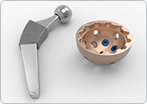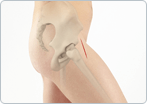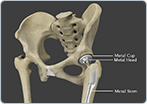Hip
Conditions
-
Developmental Dislocation (dysplasia) of the Hip
Developmental dysplasia of the hip (DDH) is a common disorder that is seen in infants and young children. -
The hip joint is a “ball and socket” joint. The “ball” is the head of the femur or thigh bone
-
Pelvic fracture is a condition that arises due to breakage of the pelvis bones. It may damage internal organs,
-
Hip bursitis is a painful condition caused by inflammation of a bursa in the hip. Bursae are fluid filled sacs present in joints
-
The hip joint is a ball and socket joint. The “ball” is the head of the femur, or thigh bone, and the “socket” is the cup shaped acetabulum.
-
A tear in the muscle fibers caused by either a fall or direct blow to the muscle, overstretching and overuse injury is called a strain.
-
Inflammatory Arthritis of the Hip
Inflammation of the joints is referred to as arthritis. The inflammation arises when the smooth covering (cartilage) -
A hamstring strain is an excessive stretch or tearing of hamstring muscles which are located at the back of the thigh.
-
Osteoarthritis, also called degenerative joint disease is the most common form of arthritis. It occurs most often in older people.
-
Osteonecrosis, also known as avascular necrosis, is a condition characterized by bone death due to inadequate blood supply.
-
Perthes disease, also known as Legg-Calve-Perthes Disease (LCPD) is a disorder of the hip that affects children,
-
Slipped Capital Femoral Epiphysis
Slipped capital femoral epiphysis (SCFE) is a common hip disorder in adolescents causing slippage -
The femur or thigh bone is the longest and strongest bone in the body, connecting the hip to the knee.
-
Transient Osteoporosis of the Hip
Transient osteoporosis of the hip is a rare condition that causes bone loss temporarily in the upper part of the thighbone (femur).
-
Meralgia paresthetica, also known as Bernhardt-Roth syndrome is a neurological condition characterized by pain and numbness in the thigh.
Treatments
-
Anesthesia for Hip and Knee Surgery
Anesthesia for hip and knee surgery is the use of medicines called anesthetics to prevent pain during hip and knee surgery/procedures. -
Hip implants are artificial devices that form the essential parts of the hip joint during a hip replacement surgery.
-
Minimally Invasive Hip Replacement
The hip joint is one of the body’s largest weight-bearing joints and is the point where the thigh bone (femur) and the pelvis (acetabulum) join.
-
Total hip replacement is a surgical procedure in which the damaged cartilage and bone is removed from the hip joint and replaced with artificial components.
-
Total Hip Replacement Exercise Guide
Exercising the muscles that surround and support the hip help restore range of motion and joint strength after hip replacement surgery.
Schedule an appointment with our team!

